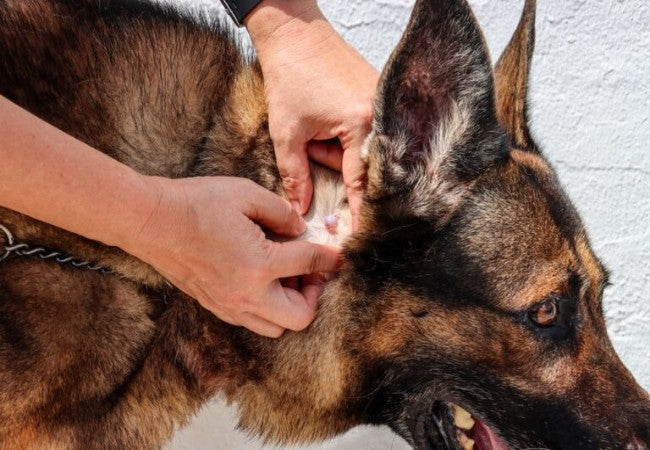Vet’s 2025 Guide to Hair Follicle Tumors & Cysts in Dogs – Types, Diagnosis & Care 🐶

In this article
Vet’s 2025 Guide to Hair Follicle Tumors & Cysts in Dogs – Types, Diagnosis & Care 🐶
By Dr. Duncan Houston BVSc
💡 What Are Hair Follicle Tumors?
Hair follicle tumors are growths originating from the components of the skin’s hair-making unit. In dogs, they account for around 10% of skin tumors—most are benign, though rare malignant forms exist.
🌀 Common Types
- Trichoblastoma: Most common benign tumor of hair matrix cells (root); typically solitary and seen in breeds like Poodles and Cocker Spaniels.
- Infundibular Keratinizing Acanthoma (IKA): Occurs in follicle upper part; may discharge keratin and pus; often on trunk or neck.
- Trichoepithelioma: Benign, often multiple small facial/trunk lumps filled with cheesy material; may recur after excision.
- Pilomatricoma: Root-origin tumor; usually benign but rare malignant forms exist.
- Cysts: Follicular cysts are benign, fluid- or keratin-filled; can become infected; often surgically removed.
📌 Signs to Spot
- Firm, slow-growing lumps on the skin surface; may ulcerate or ooze if IKA or cyst
- Sometimes itchy, crusted, secondarily infected
- Malignant tumors are rare; signs include rapid growth, invasiveness, and ulceration
🧪 Diagnosing Tumor Types
- Physical exam: size, shape, discharge, ulceration
- Fine-needle aspirate or biopsy: differentiates tumor types and benign vs malignant status
- Histopathology confirms the diagnosis; understanding follicular anatomy helps classify tumors accurately
✂️ Treatment Options
- Surgical removal: Preferred, especially for solitary or symptomatic tumors; often curative for benign types
- Monitoring: Small, non-irritating cysts or epitheliomas can be observed unless they grow or become inflamed
- Antibiotics: If cysts or tumors become infected
- Advanced therapy: Rare malignant cases may benefit from radiation, chemotherapy, or targeted agents
📈 Prognosis & Follow-Up
- Benign tumors like trichoblastomas and IKAs have excellent outcomes post-removal.
- Trichoepitheliomas may recur at new sites; regular physical exams help early detection
- Malignant hair follicle tumors are rare but require vigilant follow-up
🛡️ Preventive Care
- Breed predisposition: monitor breeds like Standard Poodle, Cocker Spaniel, and Schnauzer
- Check skin monthly for new nodules; note changes in existing bumps
- Prompt vet evaluation of unusual or growing lumps
📲 Owner Tools & Support
- Ask A Vet: Telehealth helps in interpreting biopsies and managing skin lumps
🌟 Case Snapshot
Case: Rosie, a 6-year-old Cocker Spaniel, had a slow-growing round lump by her shoulder. Biopsy confirmed trichoblastoma. Surgical removal led to full healing, and six-month skin checks have stayed clear ever since. 🐾
✅ Key Takeaways
- Most hair follicle tumors are benign and treatable
- Common types include trichoblastomas, IKAs, trichoepitheliomas, pilomatricomas & cysts
- Diagnosis requires biopsy/histopathology
- Surgical removal cures most; monitor for recurrence
- Early vet evaluation leads to the best skin health outcomes 🐕🩺
📥 Need Advice?
Have a new skin lump on your dog? Download the Ask A Vet app for real-time support with skin exams, biopsy interpretation, and care plans. Visit AskAVet.com to stay ahead of skin health. 🩺🐾






